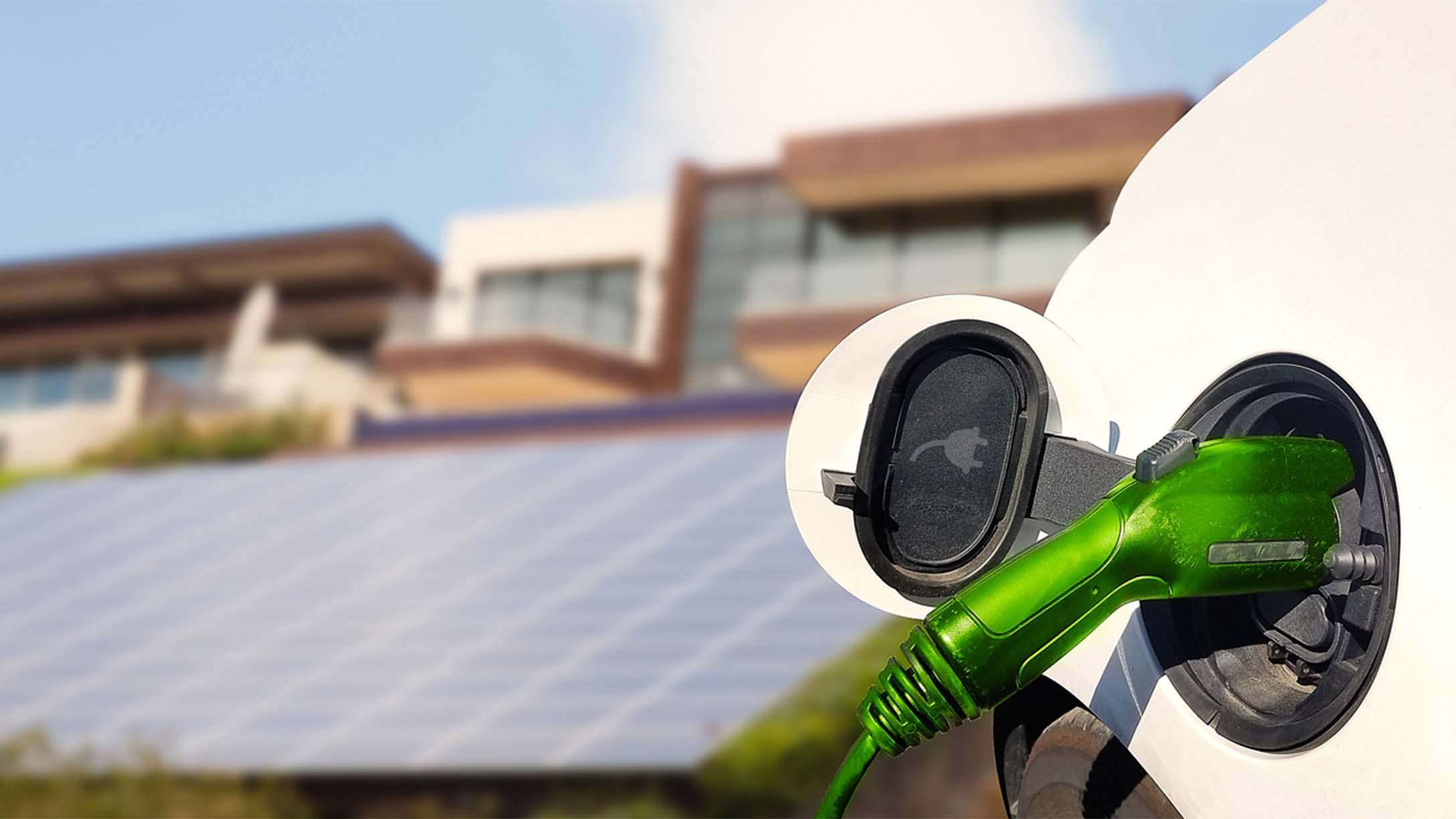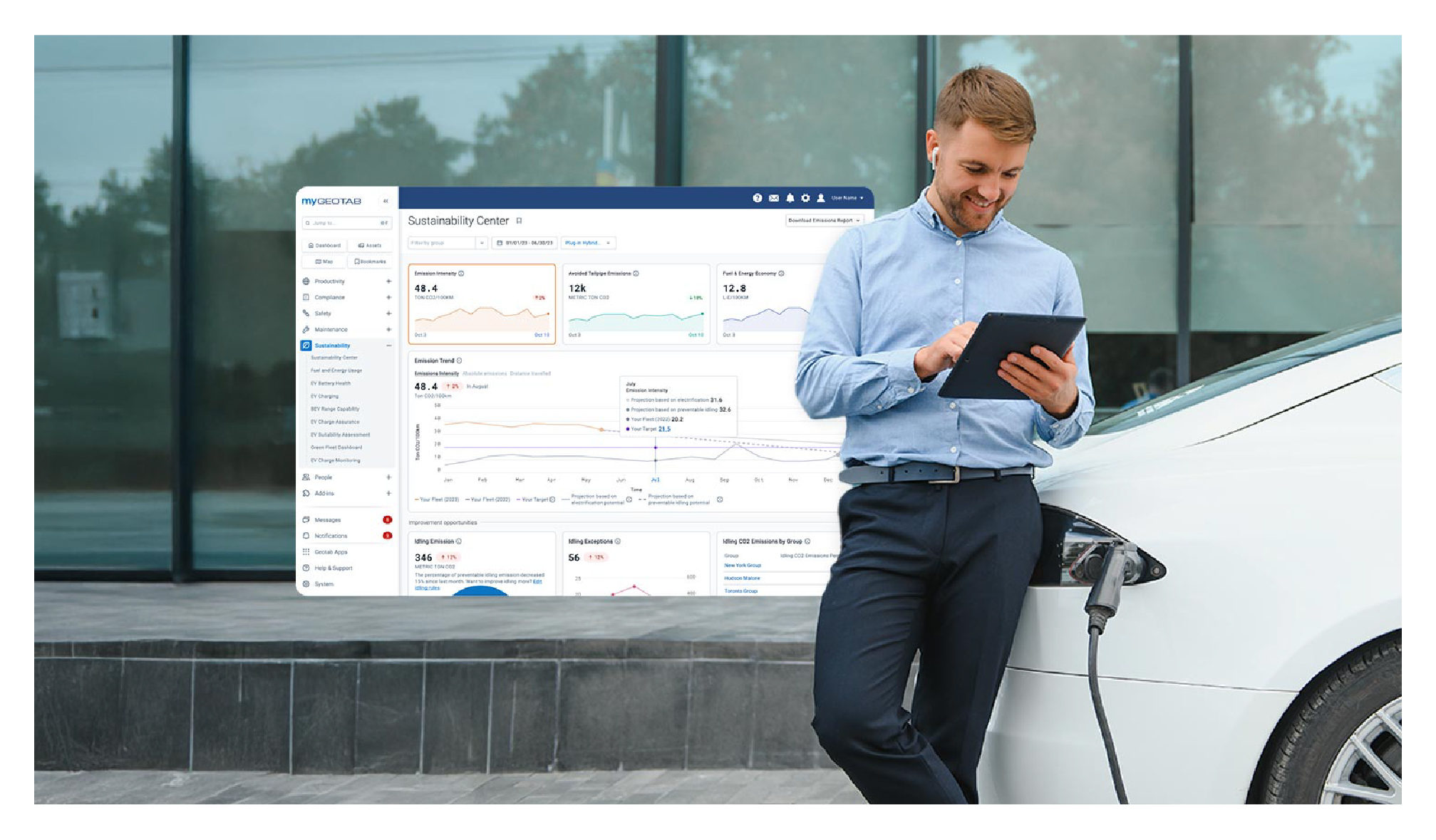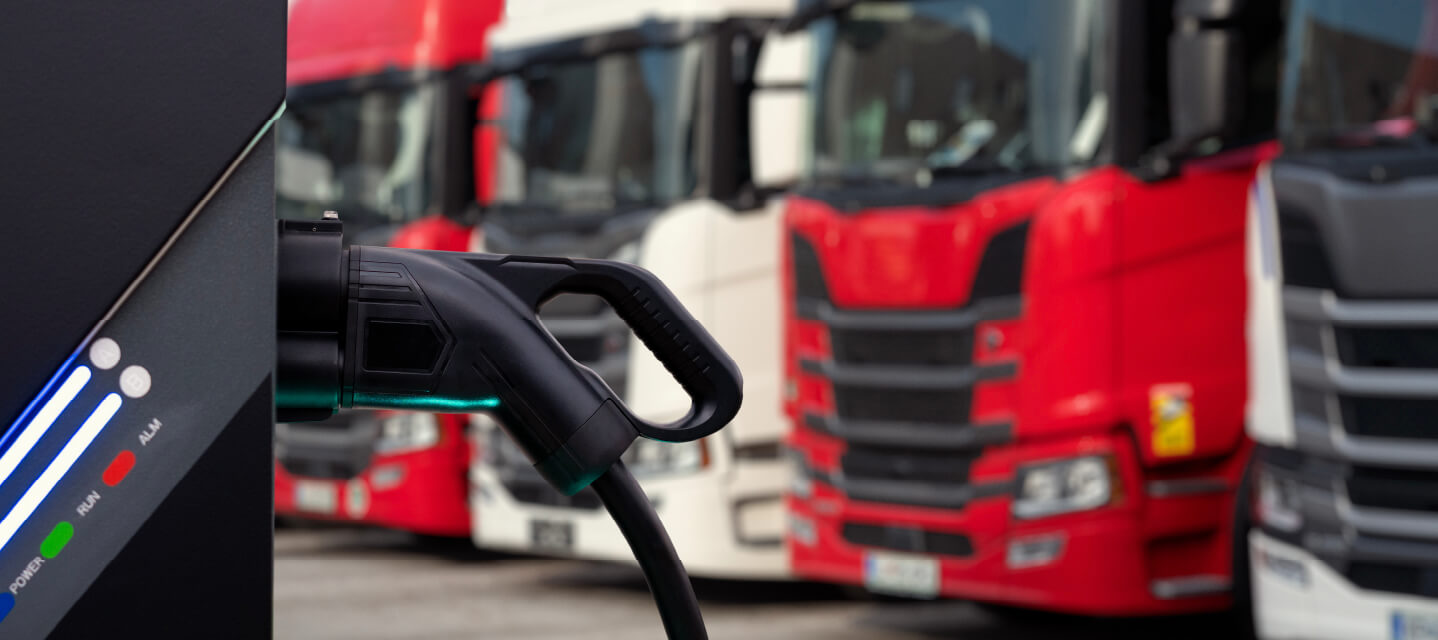Electrify your fleet: Q&A with the expert
The EV telematics expert answers your questions on how many electric vehicles to buy and when. Learn how to electrify your fleet the right way.
By Geotab
Nov 21, 2018
Updated: Apr 24, 2023
4 minute read

Should your fleet be electric, hybrid, or gas? How do you know your solution will be expensive or cost-effective? It sometimes feels like there are more questions than answers when it comes to fleet electrification. Matt Stevens, Vice President, Electric Vehicles at Geotab, answers the top questions on how to electrify your fleet. Below, he covers the basics of total cost of owning electric vehicles (EVs), the importance of analyzing your current fleet to see where electrification makes sense, and a case study that shows what electrifying a fleet could look like.
See also:
Take the fleet electrification survey from Rocky Mountain Institute
Replacing gas cars with electric could save more than 40 tons of CO2 emissions per car
The future of electric cars in Europe
How to get the most out of your EVs with MyGeotab
First steps to fleet electrification
GEOTAB: Electric vehicles... where do we start?
MATT STEVENS: There is no set rule on the number of electric vehicles to purchase or lease. You should only electrify where:
- Electric vehicles will perform the job better, and
- Save the fleet money.
Although fleet electrification is gaining in popularity, we have seen fleets with electric compositions as low as 1 and 5 percent and as high as 100 percent. Of course, a 100 percent electric fleet isn’t too common, yet.
GEOTAB: Does electrifying my fleet mean all vehicles must be fully electric?
MATT STEVENS: When it comes to EVs, you have many options: hybrid electric vehicles (HEV), plug-in hybrid electric vehicles (PHEV), or battery electric vehicles (BEV). BEVs are the only all-electric vehicles in the group; the others run on a combination of gas and electricity. The answer to this question is complex and involves taking a host of factors into consideration such as vehicle performance, range, emissions, and more. Only a proper analysis of your current fleet will help you decide exactly what an electrified fleet looks like for your company.
GEOTAB: Will I actually save money if I switch my fleet to electric vehicles?
MATT STEVENS: If you purchase the appropriate electric vehicles for the job and manage them properly, then yes. For example, hybrid vehicles can reduce the price of gas to 20 cents/litre (80 cents/gallon) if they’re properly recharged. Don’t charge those vehicles, and you’ll be paying full price for gas.
There are two factors involved in calculating just how much your fleet will cost:
- Total cost of ownership (TCO) — This includes all costs you’ll incur for the life of the vehicle. EVs save the most in fuel and maintenance compared to gas, and you may be able to apply for EV grants to lower the TCO even further.
- Per mile driven — Here, you’ll compare the cost of energy per mile (called an eMile) against the cost of fuel per mile. This calculation will also include the depreciation of the vehicle.
GEOTAB: Will the vehicle range be able to meet fleet demands?
MATT STEVENS: Of course. Again, you have options here, from what vehicles to purchase to how and when to charge them. An electric audit using telematics data collected from your existing fleet will help you select EVs that will get the job done. With the proper infrastructure in place, EVs can charge when it’s both cheapest and convenient to do so.
Electric vehicle procurement
GEOTAB: How many electric vehicles should we buy, and when?
MATT STEVENS: There is no one answer that’s valid for all businesses, which is why an audit is so important. Using telematics, we can measure myriad factors to help you make that decision. For example, if your fleet contains several different vehicle makes that drive a range of routes, a fleet audit which leverages telematics data will help identify which cars to electrify first by prioritizing operational savings and GHG reduction.
In other words, this doesn’t need to be a guessing game. Obtaining an electric vehicle suitability assessment is the best way to get an accurate forecast of ROI for vehicle procurement planning.
GEOTAB: What is an electric vehicle suitability assessment?
MATT STEVENS: An electric vehicle suitability assessment (EVSA) evaluates your current fleet and creates a multi-year procurement plan to help you electrify it. An EVSA delivers the following information to you:
- Total cost of ownership per vehicle
- Forecast of fleet-wide cost of operation and savings
- Evaluation of multi-year procurement plans specific to your fleet
- Comparisons of cost based on an independent audit
An EVSA will give you the data you need to build a strong, research-supported case for moving your fleet to electric at a pace that works for your company and its budget.
GEOTAB: What results can a fleet expect from switching to electric vehicles?
MATT STEVENS: For starters, you’ll be reducing greenhouse gas emissions, and depending on how large your fleet is and how many vehicles you electrify, that reduction can be considerable.
Fuel costs can also decrease. In one audit conducted, changing one make and model of vehicle from gas to an appropriate EV resulted in a savings of $31,000. And as we mentioned earlier, properly charged hybrid vehicles can reduce the cost of gas to 20 cents/litre (80 cents/gallon).
Benefits of going electric
GEOTAB: I’m still not sure what this all looks like. Do you have an example?
MATT STEVENS: We have many! But here’s one. We conducted an EVSA with the State of California to assess 85 gas-only vehicles operating in fleets in designated disadvantaged communities.
Telematics reported the following average baseline vehicle statistics:
- Driving distance: 23 miles
- Fuel economy: 23 miles per gallon
- Engine-on time spent idling: 27 percent
An analysis provided the following forecast should the report’s recommendations be followed:
- Total cost of ownership savings: $615,650
- Total gallons of gasoline saved: 211,897
- Total tons of CO2e greenhouse gas emissions saved: 2,984
To reach these numbers, California would need to make the following changes to the fleets evaluated in this EVSA:
- Replace 27 vehicles with PHEVs
- Replace an additional 41 vehicles with BEVs
- Retain the remaining 17 gas-driven vehicles
Post-survey results and subsequent follow-ups with the agencies selected for this study showed that most fleets had begun the procurement process for purchasing new EVs within four months of the study.
GEOTAB: What do companies overlook when it comes to EVs?
MATT STEVENS: Companies often focus their EV decision on the “middle” lane, i.e., using telematics to tell them when fleets are moving, including when the vehicle is on but stationary. They often forget the “left” and “right” lanes: using telematics to help determine which EVs they can and should buy, and what charging options will work best in their context.
GEOTAB: Last piece of advice?
MATT STEVENS: It can’t be emphasized enough: don’t guess at how to electrify your fleet. The variety of EV models has soared in the past two years. A detailed electric vehicle suitability assessment can provide you with the data you need to successfully switch to electric vehicles at a pace and price personalized for your company.
Converting your fleet from gas to electric isn’t an all-or-nothing gamble: it’s a balance. Ask the right questions and follow the proper processes, and you can embark on the gas-to-electric journey in a way that works for your fleet.
See also: Going electric: Making the switch to EVs
Subscribe to get industry tips and insights
Geotab
Geotab team
Table of Contents
Subscribe to get industry tips and insights
Related posts

What is government fleet management software and how is it used?
April 10, 2025
3 minute read

Enhancing student bus safety: Combating distracted driving in the digital age
April 7, 2025
6 minute read
.jpg)

Geotab’s new fleet Sustainability Center simplifies fuel and emissions reduction
March 3, 2025
3 minute read

How long do electric car batteries last? What analyzing 10,000 EVs tells us…
January 20, 2025
9 minute read
